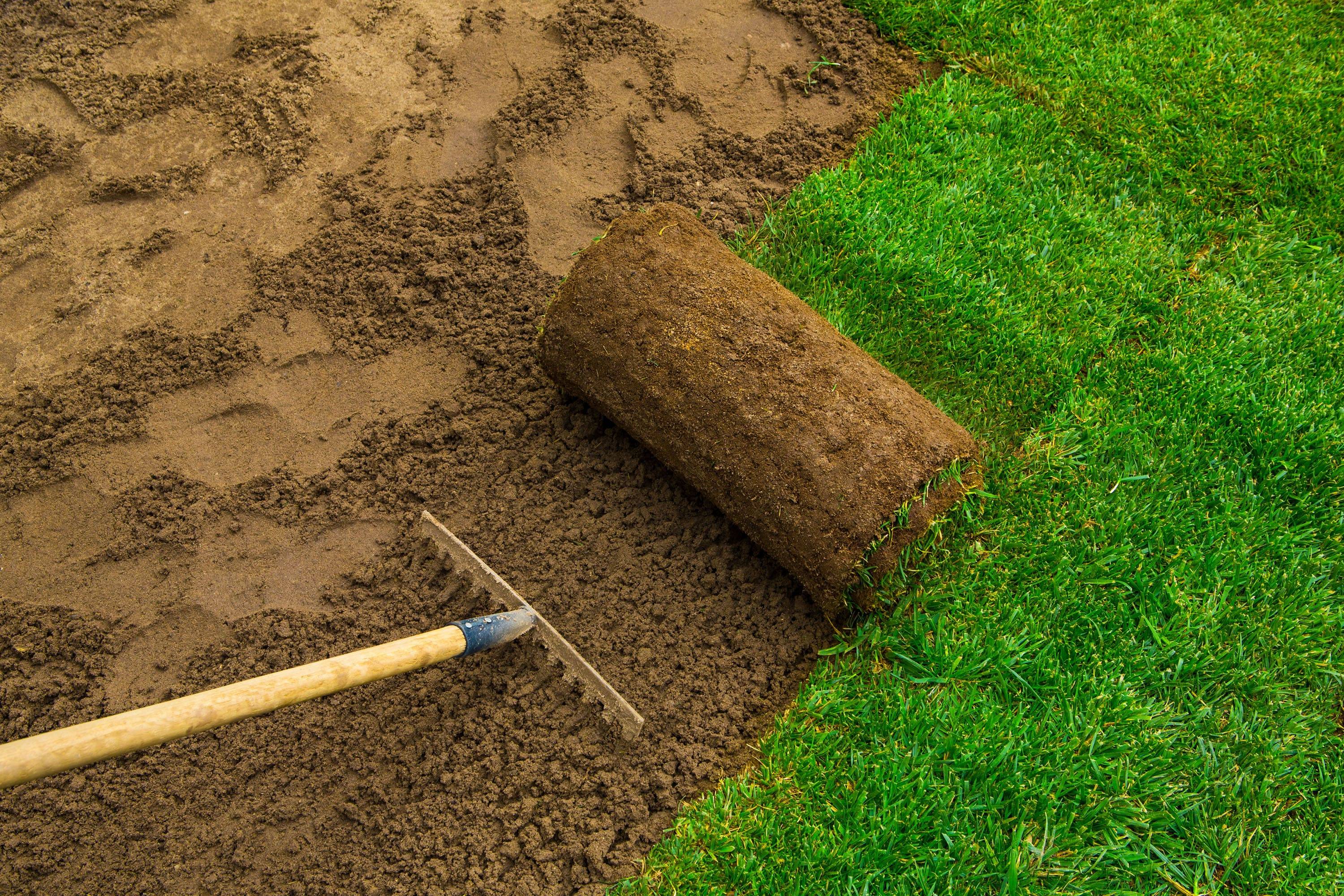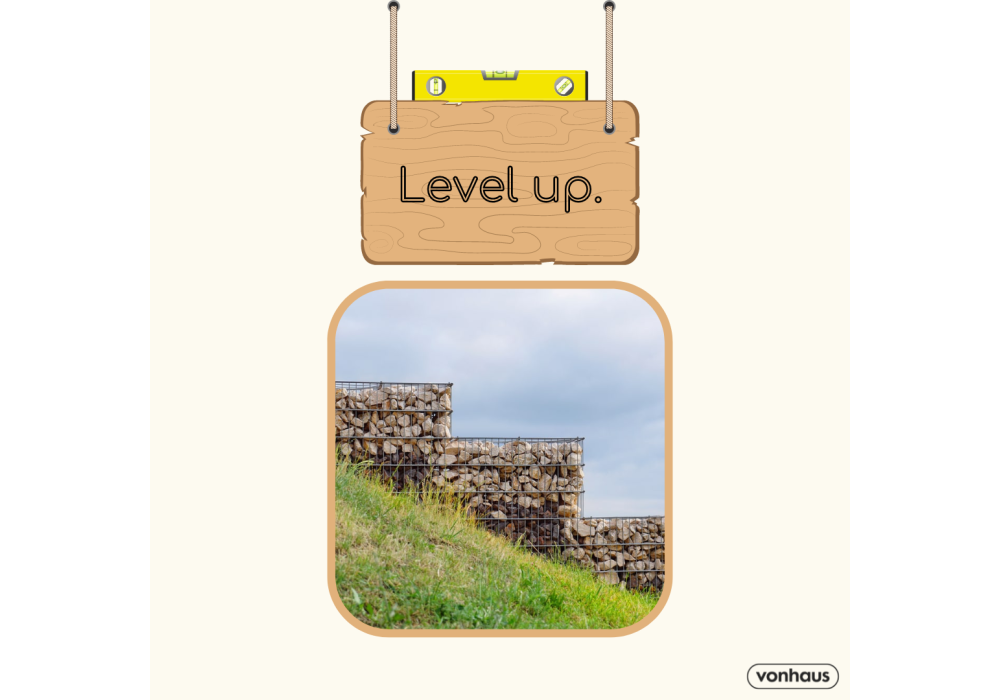How to lay turf


Whether you’re starting from scratch with a new plot or breathing new life into your old backyard, knowing how to lay turf is essential. We don’t want to make seeding look like the bad guy here, of course – it’s down to personal preference. But if you’re seeking an autumn project that’ll transform your garden, laying turf is the way forward. In this blog, we’ll show you how.
Benefits of turf vs seed
1. Can be done at any time of year
While the best time to lay turf is mid-autumn (time to get cracking!), it can be done pretty much whenever suits you. The only caveat is to avoid frozen soil, so avoid laying turf on frosty winter days. Instead, use those days as an excuse to put your feet up and give yourself a well-earned break!
2. More robust than seed
When you sow seed, it takes time for the seed to root itself in the grass – making it susceptible to heavy rainfall, wind, and bird-pecking. Oh, and being fertilised by our mischievous feline friends. As no pesky seeds are hanging about in pre-sown turf, you don’t have to worry about any of this.
3. Suitable for sloped gardens
The robust nature of turf makes it perfect for grassing up banked areas of your garden. You won’t have to worry about loose, freshly sown seeds filtering down the slope.
4. Problem-free pre-grown grass
When you buy turf, you’re also buying the time and knowledge of the cultivator who’s chosen a top-quality seed, evenly sown it, nurtured it, and warded away weeds and diseases. So, the cost of laying turf includes a wealth of behind-the-scenes expertise.
5. Quicker process than seeding a new lawn
Usually, turf takes two to three weeks to root into the soil, so it can be as little as three weeks before you can walk on it! Depending on weather conditions and ground preparation, you could be waiting up to six weeks. Carry on reading to whittle that six weeks down, with the perfect preparation for laying turf.
Pre-laying considerations


First things first – make sure you have a clear, dedicated outdoor entrance to your garden. If not, you’ll be left with a trail of soil and all things turf in your hallway. It’s super important that you’re prepped and ready to go, as when you receive the turf it’ll be all systems go; if it’s not laid within 24 hours, it risks perishing. So better get going!
Preparing the soil


Do I need to remove grass before rotavating?
If you’re revamping an old patch of lawn, the first step is to remove the existing grass to prevent weed growth and even out the texture of the soil. Shovelling up and rotavating a lawn may seem like a lot of work, but a solid foundation is key to a glorious new lawn – so get digging!
Next, rotavate the soil to around 15-20cm deep. If you don’t own a rotavator, grab your trusty spade and get to work!
When you’ve reached a good depth and removed all debris, weeds, and old roots – you’ll need to rake the soil. We’ve all got a rake knocking about somewhere, so grab yours and smooth out the surface.
Should you compact topsoil before laying turf?
Yes, this is a crucial part of achieving an even, solid base. Don’t worry, it’s not as technical as it sounds – all that’s required are your two feet! Simply take small steps over the rotavated area, covering every inch of ground at every angle. It’ll all help to reach that elusive 10,000-step goal, so strut your stuff!
Repeat the rake-and-compact cycle at least twice, finishing with one final rake to achieve a firm and level ground.
Laying the turf


Good news – the hard work is over! Once the ground is prepped, you get to enjoy the satisfaction of watching your new outdoor haven come together. Before you get going, remember to avoid standing directly on the turf! Instead, use a plank of wood as your dedicated path/kneeling platform.
It’s best to work from the outside in, so lay your first few strips of turf around the edges of your lawn space. This will make logistics a whole lot easier and create lovely clean edges.
Work within these borders from left to right until there’s no soil left to be seen. We recommend overlapping strips slightly – it’s much easier to trim away any rough edges than it is to pull and stretch out the turf to fill gaps.
Finally, water the entire turfed area thoroughly, so that it’s fully seeped through to the soil underneath.
Maintaining a healthy lawn


You’ve come this far – don’t let all your hard work go to waste! Here are our ‘dos and don’ts’ of what not to do after laying turf. Follow these to achieve the lush green plot you’ve been dreaming of:
DON’T walk all over the lawn straight away.
- When can you walk on new turf? With our maintenance and after-care tips, it should only take three weeks. But to be on the safe side, we’d save the blow-out garden parties and heavy-duty furniture sets for three months after laying.
DON’T let debris accumulate.
- How long does it take for turf to root? After two weeks, the turf should start to root. During this period, it’s crucial to allow maximum sunlight and ventilation for optimal growth – do this by clearing away any fallen leaves, debris, and stones. The clean, well-kept aesthetic is just a bonus!
DON’T forget to water the ground regularly.
- How soon after laying turf should you water it? Immediately! In the two weeks following the turf being laid, water for 20 minutes twice a day (if not already done by the rain, that is). After this period, the turf should start pulling up water from the soil beneath, reducing your watering duties. At any obvious signs of drying out (e.g., brown, curled edges), don’t be afraid to water liberally.
DON’T forget to mow the turf.
- Can I cut new turf after 2 weeks? Around three weeks after laying the turf (or when it reaches 2.5-5cm high), you should start mowing your lawn little and often. But never cut off more than a third of the grass blade’s total length.


There you have it – all you need to revitalise your lawn into a relaxed space to wine, dine, and relax with family and friends. A green grass plot lays the foundation of any gorgeous garden, so head over to our blog for all things green – from Mediterranean styling ideas to levelling out your sloping backyard. We hope we’ve answered all your burning questions, but as always let us know any other queries or tips you have for us in the comments!




 Need help?
Need help?

